McDermott’s Castle is located on Castle Island, within Lough Key, County Roscommon, Ireland. It is recognized as a protected national monument. The site has hosted fortifications since the 12th century, reflecting a long history of occupation and use. The current structure includes remnants from various periods, with significant modifications and additions dating back to the 19th century. As a historical site, McDermott’s Castle offers insight into Ireland’s medieval past and architectural evolution, making it significant for both historical and cultural studies.
Historical Background
The early history of McDermott’s Castle is linked to the Mac Diarmada dynasty, which ruled the kingdom of Magh Luirg (Moylurg) in northeast Connacht from the 10th to the 16th centuries. The castle on Castle Island is documented from the 12th century, serving as a stronghold for the ruling family.
A notable event in the castle’s history occurred in 1184, as recorded in the Annals of Loch Cé. A lightning strike set the castle ablaze, resulting in significant loss of life and property.
The castle came under siege in 1235 during the conquest of Connacht by Richard Mór de Burgh, 1st Baron of Connaught. This period marked a tumultuous chapter in the castle’s history, reflecting the broader conflicts that shaped medieval Ireland. A poem addressed to Tomaltach an Einigh mac Diarmata, who was king of Moylurg from 1421 to 1458, recounts a legend associated with the castle, further embedding it in the local cultural heritage.
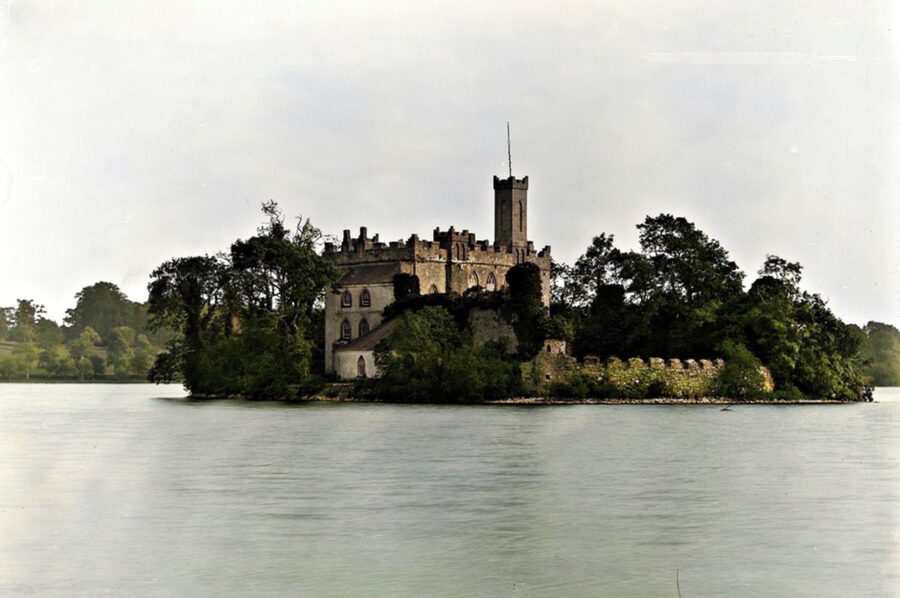
Architectural Evolution
McDermott’s Castle has undergone significant architectural changes and developments across the centuries, reflecting the evolving needs, tastes, and technologies of its inhabitants. The earliest records suggest a fortification on Castle Island by the 12th century, marking the beginning of the site’s architectural history. Over time, these initial structures gave way to more sophisticated constructions.
By the 16th century, a tower house had become the focal point of the castle’s architecture. Tower houses were a common feature in Irish castles of this period, serving both residential and defensive purposes. The McDermott’s Castle tower house would have provided a vantage point for surveillance over Lough Key and its surroundings, as well as acting as a formidable barrier against attackers.
In the 19th century, the castle saw substantial modifications under the guidance of John Nash, a renowned architect known for his work on regal and grandiose buildings. Nash’s contributions included the addition of crenellations and the restructuring of the castle into a summer house or folly, blending Gothic revival elements with the existing medieval structure. This transformation included the incorporation of larger windows, the construction of additional rooms on either side of the tower house, and modifications to the kitchen area on the eastern side of the tower. Moreover, the enclosure wall surrounding the island was altered, particularly on the northern end, to enhance views from the new main windows inserted into the tower.
These changes by Nash significantly altered the castle’s appearance and function, moving it away from its purely defensive origins towards a more aesthetic and leisure-oriented purpose.
Legends and Lore
McDermott’s Castle is steeped in local legends and folklore, which enrich its historical narrative and connect it to the cultural fabric of the region. One such tale involves the Hag of Lough Key, a figure said to have exploited Cormac MacDermott’s hospitality by staying at the castle for a full year. This legend concludes with the Hag placing a curse of perpetual hospitality on the McDermotts, a story that underscores the castle’s reputation as a place of welcome and festivity, albeit in a somewhat ominous context.
Another captivating legend is that of Una, the daughter of a McDermott chief, who fell in love with a commoner. Forbidden by her father from leaving the island to be with her lover, the story takes a tragic turn when her suitor drowns while attempting to swim across Lough Key to reach her. Overcome with grief, Una dies shortly thereafter, and the two are said to be buried on the island, marked by two intertwined trees. This poignant tale adds a layer of romantic mystique to the castle and its surroundings, embodying the timeless themes of love, loss, and defiance.
Archaeological Findings
Archaeological efforts on Castle Island have unearthed significant evidence of the site’s layered history, highlighting its strategic and residential importance over centuries. Excavations revealed an early medieval fortification layer, characterized by a two to three-meter-thick enclosure wall situated at a depth of a meter and a half below the current surface. This finding suggests the presence of an initial defensive structure predating the visible remnants of the castle.
Moreover, the archaeological team discovered medieval buildings from the 13th century on the northern side of the island, indicating a settled community with sophisticated structures. These buildings, though not directly connected to the existing enclosure wall, denote the site’s longstanding significance. High-status Gaelic artifacts, including silver pins and gaming pieces, as well as evidence of extensive animal butchery, reflect a prosperous community engaged in diverse domestic and social activities.
Recent History and Current State
The castle experienced significant transformations in the 19th century when architect John Nash was commissioned to redesign it as a summer house or folly. This period marked a shift from the castle’s original defensive purpose to an aesthetic and leisure-oriented use, introducing Gothic revival elements and substantial structural modifications.
However, the mid-20th century brought a devastating fire that destroyed much of Nash’s renovations, leaving the castle in a ruinous state. This event marked a turning point in the castle’s physical condition, contributing to its current appearance as a picturesque ruin.
In modern times, McDermott’s Castle has captured the public’s imagination through its depiction in media, notably featuring in an episode of the sitcom “Moone Boy.”
The castle’s fate took another turn in 2018 when it was put up for sale for €80,000. The proposed sale generated widespread interest, but was ultimately withdrawn, leading to the castle’s return to private Irish ownership.
Visiting McDermott’s Castle Today
McDermott’s Castle, set on the picturesque Castle Island in Lough Key, County Roscommon, remains an intriguing destination for those interested in Ireland’s rich history and natural beauty. Although the castle itself is not open to the public due to its status as a protected national monument and its condition, visitors can still enjoy the surrounding area and the views of the castle from Lough Key.
Lough Key Forest Park and Activity Park offers a gateway to explore the area’s natural and historical landscapes. Situated approximately 3km northeast of the town of Boyle, the park spans around 800 hectares of woodland and parkland, featuring an array of amenities and attractions for tourists and visitors:
- Observation Tower: Offers panoramic views of Lough Key and its islands.
- Wishing Chair and Underground Tunnels: Historical and mysterious structures that spark the imagination.
- Wildlife: The park’s diverse habitats are home to a rich variety of flora and fauna.
- Trinity Island: Accessible by boat, it houses a ruined church, adding a spiritual dimension to the exploration.
- Moylurg Tower: Provides stunning views of the lake, standing on the site of the former Rockingham House.
- Amenities: The park includes a modern visitor center with extensive views over the lake, a fully serviced caravan park, and walking trails that allow visitors to immerse themselves in the natural beauty and serenity of Lough Key.
Restrictions and Considerations for Visitors:
- As McDermott’s Castle is a protected national monument, direct access to the island may be restricted to preserve its structural integrity and to protect the site from damage. It’s important to respect these restrictions and enjoy the castle from a distance.
- Visitors are encouraged to follow the park’s guidelines and respect the natural environment, ensuring the conservation of this historical and natural treasure for future generations.
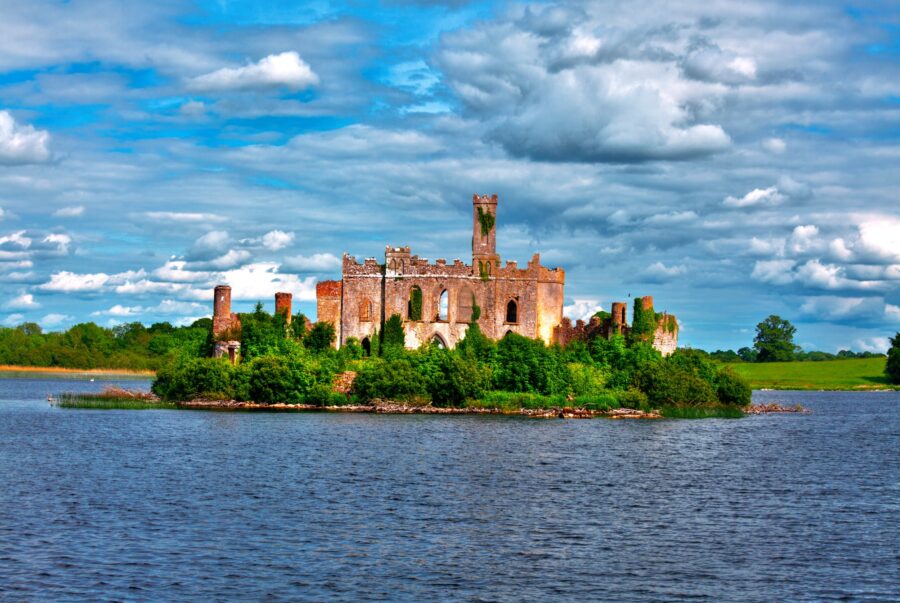


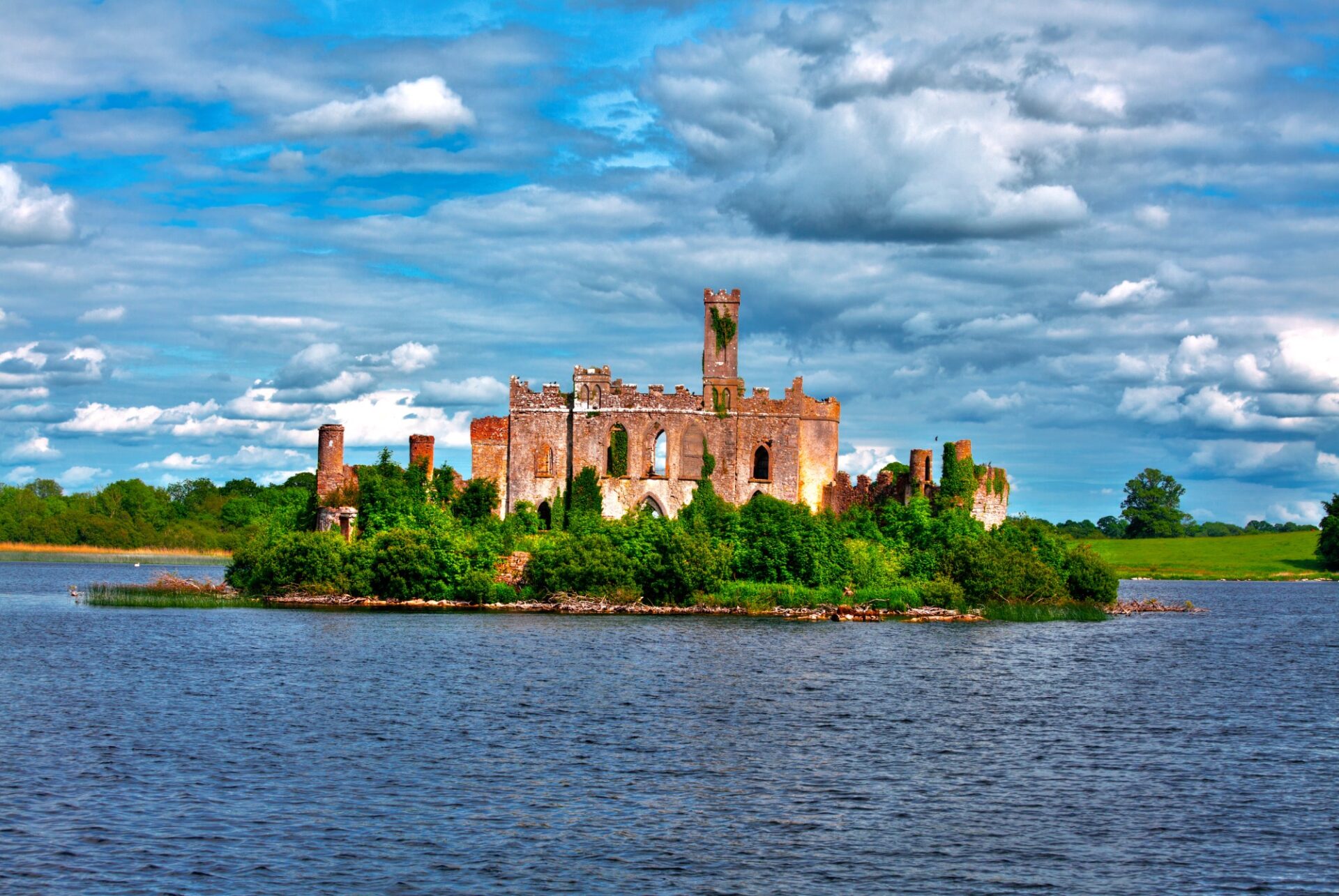
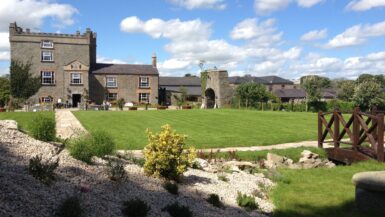
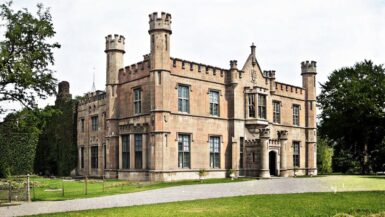
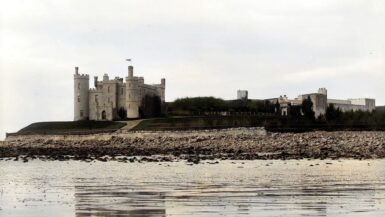
Leave a reply